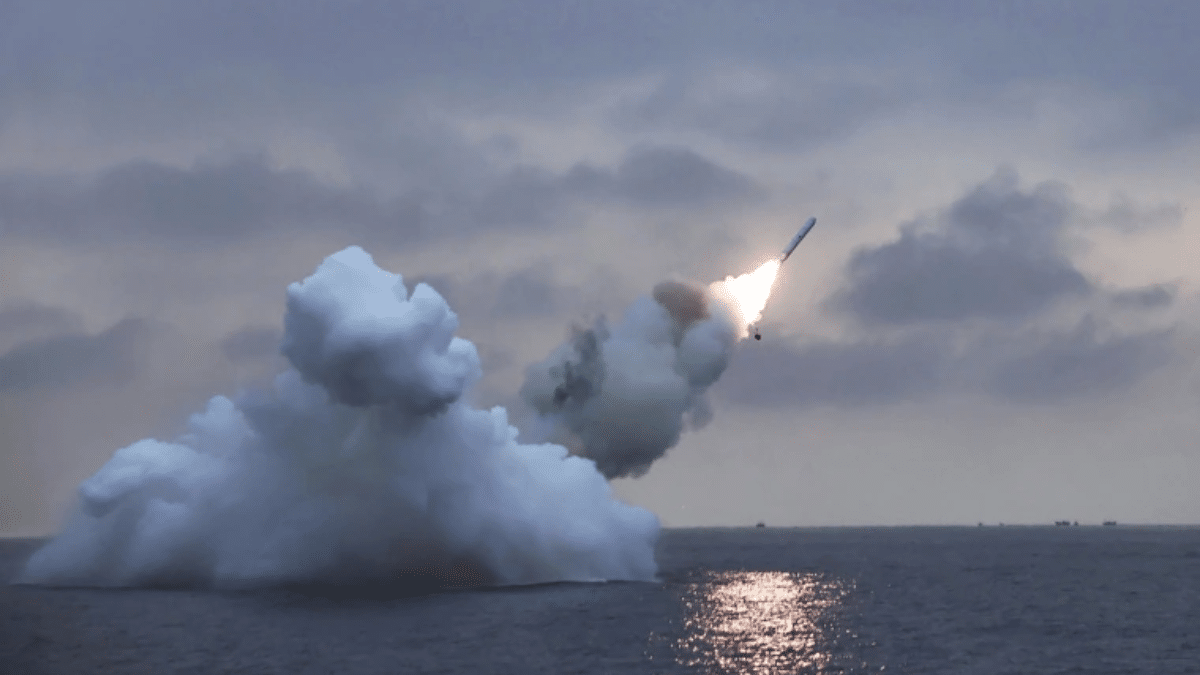 Image Credits - NBC News
Image Credits - NBC News
North Korea launched multiple cruise missiles into waters off its western coast on January 30, its third such launch this month, as part of its ongoing weapons testing campaign. When the incident was reported by the South Korean military, it was disclosed that the details of the launches, which were discovered at around seven in the morning, are presently being examined by South Korean and American forces. Specific details, such as the quantity of missiles fired, their range, and the launch site, haven’t been made public right away.
The Pulhwasal-3-31 cruise missile, which North Korea claims is intended for submarine deployment, was tested similarly on January 24 and 28, before the most recent incident. North Korean leader Kim Jong Un reaffirmed his commitment to constructing a nuclear-armed navy following the second launch, citing perceived foreign threats. The nature of the launch on January 28, whether from an actual submarine or an underwater barge, remains uncertain.
With Kim accelerating the development of weapons and threatening to use nuclear weapons against Japan, South Korea, and the United States, tensions on the Korean Peninsula have reached a breaking point. As a result, the United States and its partners in Asia have increased their joint military drills, involving strategic weapons such as nuclear-powered submarines, aircraft carriers, and long-range bombers. In particular, South Korea wants further reassurance from the United States that it will use nuclear weapons to defend itself against a nuclear attack by North Korea.
North Korea demonstrated its attempts to improve its arsenal of weapons that may strike American interests in the Pacific, including Guam, by testing a new solid-fuel intermediate-range missile on January 14. There is growing concern that Kim may apply more pressure on critics amid an election year in both South Korea and the United States, given his confidence gained from nuclear developments and his closer relationship with Russia.
In addition to weapons testing, South Korea is becoming increasingly concerned about the possibility of direct provocations coming from North Korea. Early in January, North Korea provoked a reaction from South Korea by firing hundreds of artillery rounds into waters close to the disputed western sea boundary. Although there were no injuries or property damage, this exchange took place in a region that has historically seen attacks and conflicts.
On January 15, Kim announced a break from the long-standing goal of peaceful unification with South Korea during an address in Pyongyang. He commanded that North Korea’s constitution be revised, labelled the South as its most dangerous foreign foe, and threatened to use nuclear weapons if provoked.
According to experts, North Korea wants to lessen South Korea’s influence in global negotiations to end the nuclear impasse. From a position of strength, the North looks to engage in direct talks with Washington to confirm its nuclear status and negotiate the lifting of sanctions led by the United States. The world community keeps a careful eye on events on the Korean Peninsula as tensions continue to rise.
